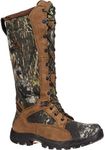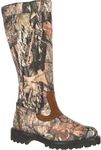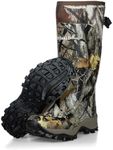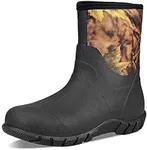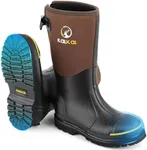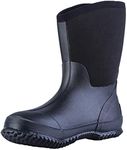Buying Guide for the Best Snake Boots
When it comes to picking the right snake boots, it's essential to consider several factors to ensure you get the best protection, comfort, and durability. Snake boots are designed to protect you from snake bites while providing comfort during outdoor activities like hiking, hunting, or working in snake-prone areas. Here are the key specifications you should consider when choosing snake boots and how to navigate them to find the best fit for your needs.MaterialThe material of snake boots is crucial because it determines the level of protection and durability. Common materials include leather, synthetic fabrics, and rubber. Leather is durable and offers good protection but can be heavier. Synthetic fabrics are lighter and often more breathable but may not be as durable as leather. Rubber is excellent for waterproofing and easy to clean but can be less comfortable for long periods. Choose a material based on your activity level and the environment you'll be in.
HeightThe height of snake boots is important because it determines how much of your leg is protected. Snake boots typically range from mid-calf to knee-high. Mid-calf boots offer more flexibility and are lighter, making them suitable for less dense snake habitats. Knee-high boots provide maximum protection and are ideal for areas with high snake activity. Consider the terrain and snake activity level in your area to decide the appropriate height.
Fit and ComfortFit and comfort are essential for any footwear, especially snake boots, as you'll likely be wearing them for extended periods. Look for boots with adjustable features like laces, zippers, or straps to ensure a snug fit. Pay attention to the insole and padding for added comfort. Try on the boots with the socks you plan to wear and walk around to ensure they don't cause blisters or discomfort. A good fit will keep you comfortable and protected.
WaterproofingWaterproofing is a valuable feature, especially if you'll be in wet or marshy areas. Waterproof snake boots keep your feet dry and comfortable, preventing blisters and other issues. Look for boots with waterproof membranes or treatments. If you don't expect to encounter much water, you might prioritize breathability over waterproofing. Consider your typical environment to decide if waterproofing is necessary.
TractionTraction is important for maintaining stability and preventing slips on various terrains. Snake boots with good traction have soles designed to grip surfaces like mud, rocks, and grass. Look for boots with deep lugs and a tread pattern that suits the terrain you'll be navigating. If you'll be in rocky or uneven areas, prioritize boots with excellent traction to ensure safety and stability.
WeightThe weight of snake boots can affect your mobility and comfort. Heavier boots offer more protection and durability but can be tiring to wear for long periods. Lighter boots are more comfortable for extended wear but may sacrifice some protection. Consider how long you'll be wearing the boots and the level of protection you need. If you'll be on your feet all day, lighter boots might be more suitable.

